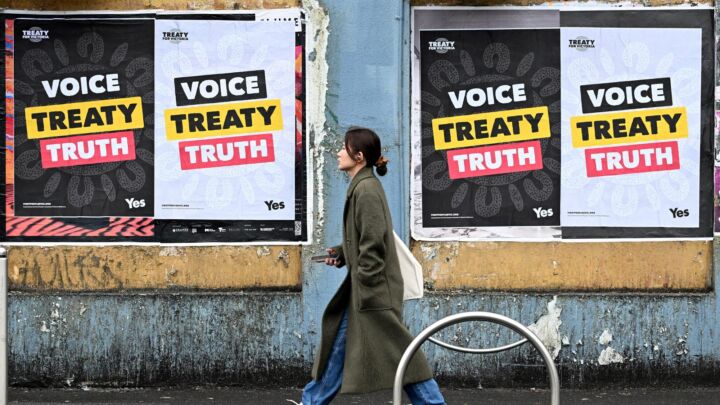From The Two Cultures to no culture
The Tools of Science showed the beauty in maths, but hiding it on BBC4 suggests that big ideas are not for the masses.

It is one of the great ironies of modern times, observed the New York Times last year, that CP Snow’s The Two Cultures remains one of the most frequently cited, yet least read, books of the past 50 years.
After all, Snow’s thesis was that the pool of human knowledge was at risk of being drained by a potentially insurmountable gulf between scientists and literary intellectuals, who were at that time regarded as the guardians of culture. As an example, he recounted going to a cocktail party where fellow scientists admitted to knowing no Dickens and the literati revelled in their ignorance of basic scientific terminology. So he started one of the great spats of post-war intellectual life, provoking literary critic FR Leavis into a fantastically bad-tempered attack on Snow, stating that the scientist-turned-novelist had perhaps overestimated his own understanding of intellectual greatness. The first canapé in the cocktail war – sorry, culture war – had been thrown.
Anyone who read Ian McEwan’s novel Solar – featuring a Nobel Prize-winning physicist taken aback by non-scientists’ claims to know anything at all – will recognise that Snow’s warning still lingers in the literary imagination. It has clearly stirred the minds of the culturati on the BBC’s niche arts channel, BBC4, who have opened their doors for a whole season of programmes on The Tools of Science.
This was actually pretty bold stuff. Whereas much of the BBC’s celebration of science has been hooked on its ‘wow’ factor (see Brian Cox’s The Wonders of the Solar System) here was a season of films that focused on the technical and avowedly non-televisual side of science: stats, diagrams and equations.
Perhaps this was all a strategic measure on the corporation’s part as it fights to justify the licence fee in the face of stern governmental pressure and a large degree of internal dysfunction. Bringing unfashionable and high-minded science programming to the masses is, of course, exactly the kind of thing the BBC insists justifies its public service funding, but which it would rather not produce too often because it’s just so dull and doesn’t get you talked about at cocktail parties. But the BBC does have a fabulous, and underused, archive to draw upon, and a perpetually eager army drawn from the so-called ‘third culture’ of science communicators.
Nonetheless, The Tools of Science rose to the challenge in an admirably serious way. So we had mathematician Marcus du Sautoy’s illuminating, and sardonically titled, The Beauty of Diagrams (the first episode of which explained why The Vitruvian Man is a masterpiece, using only maths and a man in his pants). Then there was Lisa Jardine’s discussion of her father Jacob Bronowski’s wartime activities in the episode My Father, The Bomb and Me (which also offered a handy reminder of when the BBC used to make boldly popular science series such as The Ascent of Man). Mad and Bad: 60 Years of Science on TV was a compilation of all those great BBC science programmes we know and love, and a reminder of how great Doctor Who is because thick people watch it and it sometimes mentions sciencey things.
Pick of the bunch, though, was art historian Matthew Collings’ Beautiful Equations, where a self-proclaimed art-school kid tried to grapple with what some of the famous equations actually mean. But what was so striking about this particular programme was not the conceit – non-expert talks to experts for benefit of the viewer – but that it served as a meditation on the concept of beauty in the modern age.
Collings picked up the old aesthetes’ theme of beauty as a form of man-made perfection, and explored how the clarification to human understanding of the natural world afforded by mathematics and science acted as a spur to the artistic imagination of the twentieth century modernists. Unusually, Collings was not offering us art as social history or moral lesson, but instead urged viewers to reflect on the uselessness of beauty: even when it can be tied to something as functional and utilitarian as an equation, it possesses the same absolutely compelling abstract and intangible quality as it does in a work of art.
It was this programme in particular that brought to mind Snow. As the critic Roger Kimball has noted, what infuriated the likes of Leavis was not the accusation that they were dismissive of the idea of scientific progress – the ability of scientific innovation to enhance humanity’s material condition was taken as inevitable – but that Snow tended to look to science as a moral resource. Leavis conceded that any educated person would need a certain familiarity with basic scientific terminology and concepts, but that to demand that every cultured person should have expert knowledge was ludicrous.
Reflecting on The Two Cultures on its fiftieth anniversary last year, the art critic Jonathan Jones concluded, with regret, that both Snow and his detractors would be out of favour today. Whereas they were arguing over the best way to improve humanity through culture, today culture is only really understood as a hedonistic distraction.
And so it seemed telling that some of the most fascinating science programmes screened this year should be tucked away on a niche arts channel. An exploration into the political, philosophical and cultural forces of how we went from The Ascent of Man to here could have made for a season of programmes in itself – but perhaps we should be thankful that high-quality science programmes are still being made at all.
David Bowden is spiked’s TV columnist.
To enquire about republishing spiked’s content, a right to reply or to request a correction, please contact the managing editor, Viv Regan.








Comments
Want to join the conversation?
Only spiked supporters and patrons, who donate regularly to us, can comment on our articles.